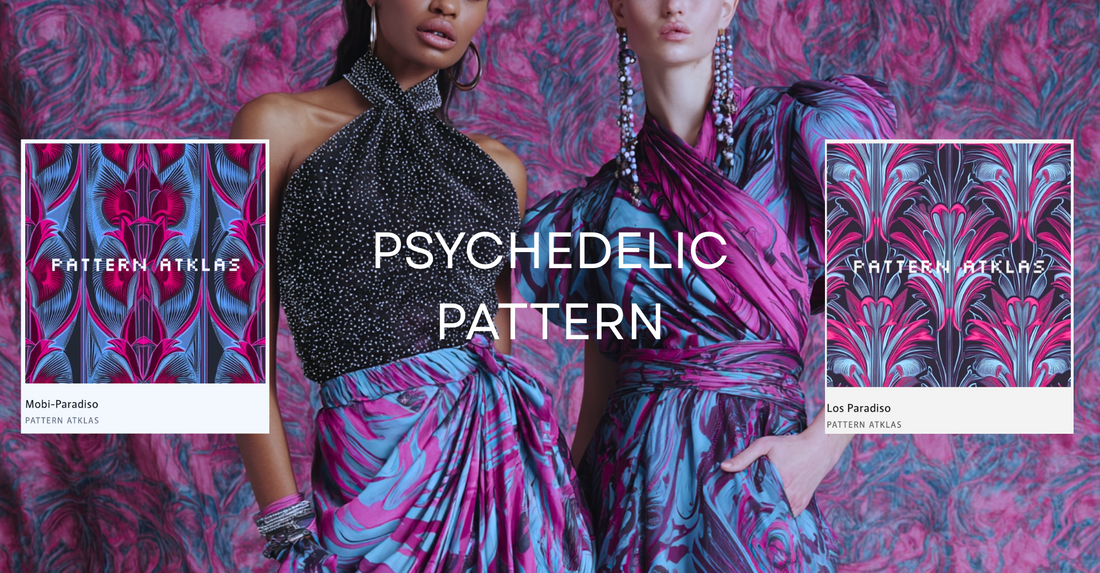
Psych Out: The Return of Psychedelic Patterns
Share
Every few decades, fashion looks backward to move forward.
Right now, it’s gazing straight into the kaleidoscope. Psychedelic pattern design, once the visual language of the 1960s and 1970s counterculture, is back in full swing, only this time it’s tuned to the digital age.
Born out of rebellion and escapism, psychedelic patterns once pulsed through rock posters, tie-dye shirts, and lava-lamp-lit rooms. Today, they’re being reimagined with sharper edges, digital gradients, and cleaner silhouettes. The result? A trend that still feels wild at heart, but fit for a modern, global audience hungry for self-expression.
What makes the new wave psychedelic?
Colors that hum with energy: Electric blues, neon pinks, and cosmic purples clash to create optical illusions and movement.
Patterns that flow endlessly: From spiraling fractals to paisleys that ripple like water, these designs pull the eye deeper.
Typography that bends reality: Curves, melts, and distortions make words feel like they’re alive, demanding a second glance.
Modern polish: Instead of overwhelming the viewer, today’s psychedelia often appears as accents—on a jacket lining, a campaign poster, or a gradient-filled logo.
Why now?
The revival isn’t random. It’s fueled by cultural mood. Psychedelic design offers an escape from uncertainty, a rebellion against sameness, and a chance to stand out in an overcrowded digital feed. Its boldness speaks to the rising demand for individuality and visuals that stop people mid-scroll. Nostalgia plays its part too—the retro charm of the 70s resonates with a generation rediscovering the joy of vintage experimentation.
Where it’s showing up
Fashion houses: Gucci, Stella McCartney, and indie labels are embracing hypnotic swirls and distorted florals.
Branding: Companies use psychedelic visuals for packaging and digital campaigns to break through visual noise.
Interiors: From wallpapers to textiles, the home is once again becoming a canvas for trippy patterns.
Merch: T-shirts, bags, and accessories turn into collectible artworks with vibrant, surreal designs.
Psychedelic pattern design isn’t just making a comeback—it’s reshaping itself into a toolkit for modern storytelling. What began as counterculture has become culture itself, proving that sometimes the best way forward is through a swirl of color, chaos, and creativity.
At Pattern Atklas, we see this revival not as a passing trend, but as a movement—one that celebrates the power of design to mesmerize, disrupt, and connect.
